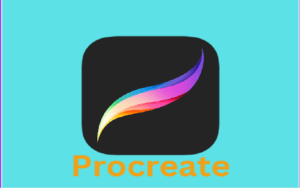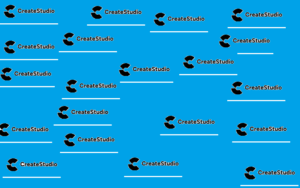Navigating the vast landscape of digital art supplies is essential for artists who aim to leverage the latest in creative technology. This review delves into the myriad of options available, from sophisticated drawing tablets and software to innovative digital brushes and accessories. Tailored for both seasoned professionals and emerging talents in the digital art realm, our exploration offers a comprehensive look at the cutting-edge tools that can transform artistic visions into reality. By highlighting key features, advantages, and potential drawbacks, we provide valuable insights to help artists of all levels select the digital art supplies that best fit their unique creative needs and aspirations.
Table of Contents
Trends in Digital Art Supplies: What’s New for 2024
As we move into 2024, the landscape of digital art supplies continues to evolve at a rapid pace, bringing new innovations and technologies that redefine the way artists create, share, and experience art. Staying abreast of these trends is crucial for artists looking to leverage the latest tools and techniques in their work. Here, we explore the key trends in digital art supplies for 2024, highlighting new developments that are shaping the future of digital creativity.
Integration of AI and Machine Learning
One of the most significant trends in digital art supplies is the integration of artificial intelligence (AI) and machine learning algorithms into drawing software and apps. These technologies offer artists unprecedented capabilities, from intelligent brush behaviors that mimic real-world physics to software that can suggest compositional improvements or generate dynamic color palettes. AI-driven tools are not only enhancing creativity but also streamlining workflows, enabling artists to focus more on the creative process itself.
Advanced Digital Drawing Tablets
Digital drawing tablets continue to see significant improvements, with manufacturers focusing on enhancing sensitivity, accuracy, and the overall drawing experience. The latest models boast features like battery-free styluses, higher pressure sensitivity levels, and improved tilt recognition. Additionally, portable tablets with built-in screens are becoming increasingly powerful, offering artists the flexibility to create high-quality work anywhere.
Rise of 3D Modeling Software
As the demand for 3D content grows across industries, from gaming to film, 3D modeling software becomes a more integral part of the digital art supplies toolkit. In 2024, we’re seeing software becoming more user-friendly, with intuitive interfaces and streamlined workflows that lower the barrier to entry for artists new to 3D modeling. Enhanced realism in textures, lighting, and rendering techniques allows for the creation of stunningly lifelike models and scenes.
Expansion of Cloud-Based Collaboration Tools
Cloud-based platforms and collaboration tools are transforming how artists work together. These digital art supplies enable real-time collaboration on projects, seamless sharing of resources and assets, and the ability to work on a piece simultaneously from different locations. This trend is particularly beneficial in a world where remote work has become more commonplace.
Emphasis on Eco-Friendly Digital Art Practices
Sustainability is becoming a priority, and in 2024, we’re seeing a push towards more eco-friendly digital art practices. This includes the development of energy-efficient hardware, software that minimizes computational waste, and platforms that support carbon offsetting for digital art transactions. Artists are increasingly aware of their environmental impact and are looking for ways to create art responsibly.
In conclusion, the trends in digital art supplies for 2024 are driving a more intelligent, flexible, and sustainable approach to digital art. By embracing these innovations, artists can enhance their creative capabilities, collaborate more effectively, and contribute to a more sustainable practice of digital artistry. As we continue to explore the possibilities of digital creativity, staying informed about these trends will be key to harnessing the full potential of digital art supplies.
Top Digital Drawing Tablets of 2024
In 2024, the digital drawing tablet market continues to flourish, offering a diverse range of options that cater to artists of every skill level and professional background. As technology progresses, these indispensable tools for digital art have become more sophisticated, incorporating features that promise to elevate the creative process. Below, we explore some of the established products from renowned brands around the world, each leading the way in innovation and quality.
Wacom Intuos Pro: A Benchmark for Professionals
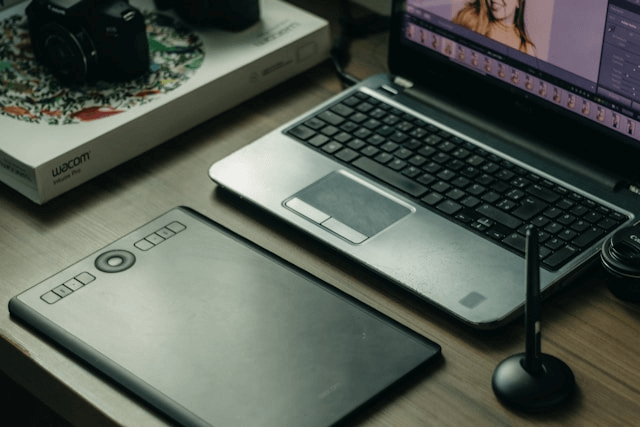
The Wacom Intuos Pro remains a top choice for professionals, known for its outstanding pressure sensitivity of 8192 levels and a battery-free pen that offers tilt recognition. Its large, smooth drawing surface and customizable ExpressKeys™ provide a seamless and intuitive user experience. The Intuos Pro is especially favored for its precision and reliability, making it a staple in the digital art community.
Apple iPad Pro with Apple Pencil: Portability Meets Power
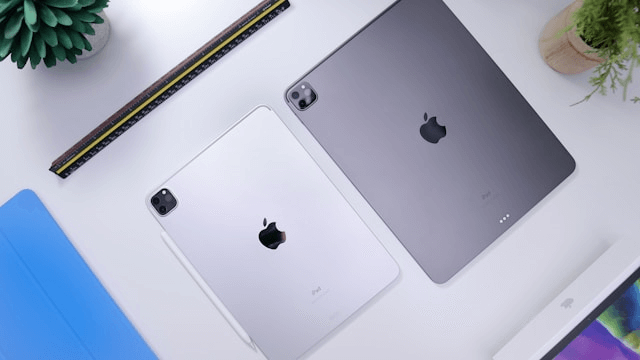
For artists on the go, the Apple iPad Pro, paired with the Apple Pencil, offers an unbeatable combination of portability and performance. The iPad Pro’s Liquid Retina display showcases vivid colors and fine details, while the Apple Pencil impresses with its low latency and pressure sensitivity, providing a natural drawing and painting experience. This setup is ideal for creatives who value flexibility and the ability to work anywhere, without compromising on power.
Huion Kamvas Pro 24: High-End Features at a Mid-Range Price
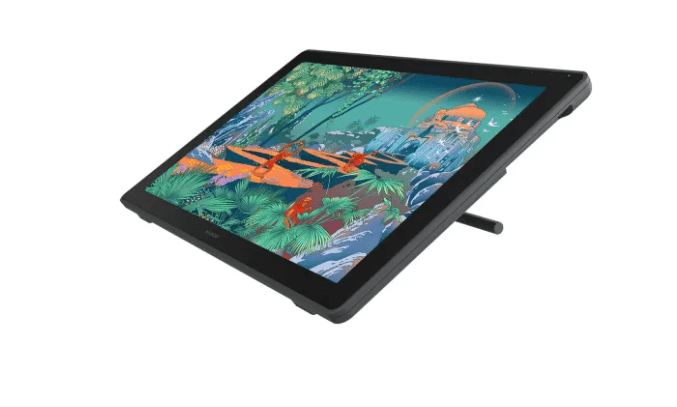
Huion’s Kamvas Pro 24 is a standout for offering high-end features at a more accessible price point. With a 2.5K QHD display, artists can dive into their work with stunning clarity and color accuracy. The tablet’s anti-glare screen and battery-free stylus with 8192 levels of pressure sensitivity ensure comfortable and precise drawing sessions. The Kamvas Pro 24 is a compelling choice for serious hobbyists and emerging professionals alike.
XP-Pen Artist 15.6 Pro: Budget-Friendly Without Sacrificing Quality
The XP-Pen Artist 15.6 Pro is a testament to the fact that quality doesn’t always have to come at a high price. It offers a fully-laminated IPS display for a vibrant viewing experience and minimal parallax. The Artist 15.6 Pro also features a red dial interface and customizable shortcut keys, enhancing efficiency and ease of use. It’s a perfect entry-level tablet for beginners and students who are looking for a reliable tool without breaking the bank.
Samsung Galaxy Tab S7+ with S Pen: Android’s Top Contender
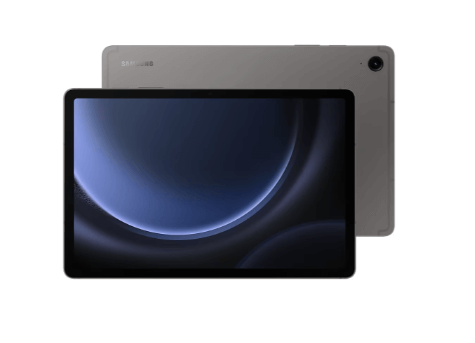
For Android enthusiasts, the Samsung Galaxy Tab S7+ emerges as a top contender, providing a high-quality drawing experience with the included S Pen. The tablet’s Super AMOLED display delivers crisp, bright visuals, while the S Pen boasts low latency and high precision, making it ideal for drawing, note-taking, and more. The Galaxy Tab S7+ is a versatile choice for artists who prefer an Android ecosystem.
In conclusion, the top digital drawing tablets of 2024 represent the pinnacle of current technology, offering a range of options for every artist, from the budding beginner to the seasoned professional. With each brand bringing its unique strengths to the table, artists have the luxury of choosing a tool that best fits their workflow, style, and budget. These established products not only promise to enhance the digital art experience but also highlight the incredible innovation occurring within the creative technology space.
Digital Art Software: A Comprehensive Guide
In the dynamic realm of digital art, the choice of software is as crucial as the artist’s skill. With a plethora of options available, selecting the right digital art software can be overwhelming. This comprehensive guide aims to simplify that choice by providing an overview of the most popular and powerful digital art software in the market, designed to cater to various artistic needs and preferences.
Adobe Photoshop: The Industry Standard
Adobe Photoshop is synonymous with digital art and image editing. Known for its versatility, it offers an extensive range of tools and features for photo editing, digital painting, graphic design, and animation. Its layering system, vast brush library, and advanced color editing capabilities make it a top choice for professionals. However, its complexity and subscription model may be daunting for beginners.
Procreate: Intuitive Creation on iPad
Procreate has revolutionized digital art on the iPad, offering a user-friendly interface packed with powerful features. It boasts a wide array of brushes, an advanced layering system, and the ability to import and export PSD files. Its one-time purchase model and portability make it an attractive option for artists on the go, from beginners to professionals.
Corel Painter: Natural Media Emulation
Corel Painter is celebrated for its realistic brush technology and ability to mimic traditional art materials like oil paints, watercolors, and charcoals. With an extensive toolset designed to cater to fine artists, illustrators, and photo artists, Corel Painter is a go-to for those seeking an authentic painting experience. Its customizable workspace and unique brush controls offer a level of realism unmatched by most digital art software.
Clip Studio Paint: A Favorite Among Illustrators
Clip Studio Paint is tailored for illustrators, comic artists, and animators, known for its smooth drawing experience and vector capabilities. It offers a vast selection of brushes, robust comic creation tools, and excellent line control, making it ideal for manga and comic artwork. Its affordability and feature-packed options make it a popular choice among artists of all levels.
Autodesk SketchBook: Professional Tools for Free
Autodesk SketchBook is a free application that doesn’t skimp on features, offering professional-grade drawing tools in a clean, intuitive interface. It supports pressure-sensitive drawing, an extensive brush library, and layer management, making it suitable for sketching and conceptual art. Its availability across multiple platforms and no-cost access make it an excellent option for students and hobbyists.
Krita: Open-Source Powerhouse
Krita is a free, open-source application designed by artists for artists. It features a comprehensive set of brushes, texture, and matte painting tools, and support for HDR painting. Its user-friendly interface and community-driven development have made it a favorite among digital painters and illustrators looking for a cost-effective yet powerful tool.
Choosing the Right Software
Selecting the right digital art software depends on your specific needs, skill level, and artistic goals. Consider the type of art you want to create, your preferred working style, and your budget. Most software offers trial versions, allowing you to experiment and find the tool that best fits your creative workflow.
In conclusion, the digital art software landscape is rich and varied, offering tools that can accommodate any artist’s vision. Whether you’re a professional seeking advanced features or a beginner looking for an intuitive start, there’s software out there to match your creative pursuits.
Digital Brushes and Tools: Crafting Your Digital Palette
In the realm of digital art, the tools at an artist’s disposal are just as critical as their talent and creativity. Among these, digital brushes and tools stand out as essential components for crafting detailed and expressive works. As we navigate through the digital art landscape in 2024, the evolution of these tools has been remarkable, offering artists an unprecedented level of control and versatility. This article delves into the world of digital brushes and tools, highlighting how they form the backbone of an artist’s digital palette.
The Evolution of Digital Brushes
Digital brushes have come a long way from their one-size-fits-all predecessors. Today, they are meticulously designed to mimic the behavior and texture of traditional art mediums—be it the soft blend of watercolors, the thick application of oils, or the delicate strokes of a pencil. Software like Adobe Photoshop, Corel Painter, and Procreate offer extensive libraries of brushes, each with customizable settings for size, opacity, flow, and more. Artists can tweak these parameters to achieve the exact effect they’re aiming for, making digital brushes an indispensable tool for bringing their visions to life.
Specialty Tools for Enhanced Creativity
Beyond standard brushes, specialty tools have emerged to push the boundaries of digital art. These include texture brushes that add surface detail, blending brushes for seamless transitions, and even 3D brushes that allow artists to paint within three-dimensional spaces. Such tools enable artists to explore new creative possibilities, from hyper-realistic textures to fantastical environments that blur the line between traditional and digital art.
Custom Brushes: Tailoring Your Toolkit
One of the most powerful features of digital brushes is the ability to create custom brushes. Artists are not limited to the default options provided by their software; they can design brushes that cater to their specific needs or even replicate the characteristics of their favorite traditional brushes. This customization extends to the creation of unique textures, patterns, and effects, allowing artists to cultivate a digital brush library that is distinctly their own.
Integrating Tools into Your Workflow
Incorporating these brushes and tools into an artist’s workflow is a game-changer. With the right selection, artists can streamline their process, from sketching and blocking in colors to adding the final touches. Tools like layer blend modes, masking, and digital rulers further enhance precision and efficiency, enabling artists to experiment and iterate with ease.
The Future of Digital Brushes and Tools
As technology advances, so too does the potential for new and innovative digital brushes and tools. The integration of AI and machine learning offers exciting possibilities, such as brushes that adapt to the artist’s style or tools that automate complex processes without sacrificing creativity. The future of digital art looks bright, with brushes and tools at the forefront of this creative evolution.
In conclusion, digital brushes and tools are foundational to the digital art process, offering artists a level of flexibility and precision that was unimaginable in the past. As we look to the future, the ongoing development of these tools promises to further expand the horizons of what’s possible, empowering artists to create with an ever-growing digital palette. Whether you’re a seasoned professional or a budding digital artist, taking the time to explore and master these tools can elevate your art to new heights.
Tips for Beginners: Getting Started with Digital Art
Embarking on a journey into digital art can be both exciting and overwhelming for beginners. With an array of tools, software, and techniques available, knowing where to start is crucial. Here, we provide concise, practical tips for those new to the digital art scene, helping you navigate your creative path with confidence.
Choose the Right Hardware
Your digital art journey begins with selecting the appropriate hardware. For beginners, a basic graphics tablet that connects to your computer can be a great starting point. Brands like Wacom, Huion, and XP-Pen offer affordable models that are user-friendly and highly effective. If you prefer a more integrated solution, tablets like the iPad with Apple Pencil or the Microsoft Surface can provide a more portable option with built-in displays.
Selecting Software
The digital art software you choose should align with your interests and goals. Adobe Photoshop is a powerhouse for digital painting and photo editing, while Procreate on the iPad is favored for its intuitive interface and affordability. For those interested in vector art, Adobe Illustrator is a go-to choice. Many programs offer free trials, so take advantage of these to find the software that feels right for you.
Learn the Basics
Before diving into complex projects, familiarize yourself with the basics of your chosen software. Understand how to navigate the interface, use essential tools like brushes and layers, and apply basic editing techniques. Online tutorials, courses, and forums are invaluable resources for beginners, offering step-by-step guides and community support.
Practice Regularly
Improvement in digital art comes with practice. Set aside regular time to draw, experiment with different brushes and techniques, and tackle a variety of projects. Don’t be afraid to make mistakes—they’re a natural part of the learning process. Over time, you’ll develop your unique style and become more comfortable with your tools and software.
Seek Inspiration and Feedback
Inspiration is everywhere. Look to other digital artists, social media platforms like Instagram and ArtStation, and the world around you for ideas. Joining online communities can also provide motivation, constructive feedback, and insights into your work. Feedback is essential for growth, so be open to critiques and use them to improve your skills.
Be Patient and Enjoy the Process
Lastly, patience is key. Developing your skills in digital art takes time and dedication. Celebrate your progress, no matter how small, and remember that every artist was once a beginner. Enjoy the creative process, explore different styles and mediums, and most importantly, have fun.
Getting started with digital art is a journey of discovery, filled with challenges and rewards. By choosing the right tools, learning the basics, practicing regularly, seeking inspiration, and being patient, you’ll set a solid foundation for your digital art endeavors. Embrace the journey, and let your creativity flourish.
Monetizing Your Digital Art: A Practical Guide
Monetizing digital art is an exciting prospect for many artists, transforming their passion into a viable income stream. With the right digital art supplies and strategies, artists can navigate the digital landscape to find financial success. This practical guide will delve into how artists can use their digital art supplies to monetize their artwork, providing a straightforward approach to turning creativity into profit.
Harness the Power of Digital Art Supplies for Online Presence
An online presence is crucial for monetizing your digital art. Utilize digital art supplies like graphic design software to create a compelling portfolio that showcases your work in the best light. Platforms such as Instagram, Behance, and ArtStation are perfect for displaying your digital creations. Regularly update your profile with high-quality images of your artwork, leveraging digital art supplies to enhance visuals and engage potential buyers.
Sell Artwork on Online Marketplaces with Digital Reproductions
Digital art supplies allow you to create various reproductions of your original works, from prints to merchandise. Platforms like Etsy, Society6, and Redbubble enable artists to sell their digital art in multiple formats without the need for physical inventory. Use your digital art supplies to adjust artwork for different products, ensuring your designs look great on everything from canvas prints to phone cases.
Offer Custom Work Using Digital Tools
Commissioned work is a direct avenue for monetization. Advertise your services on social media and your website, showcasing your versatility with digital art supplies. Whether it’s custom portraits, digital illustrations, or graphic design, your digital art supplies are essential in delivering work that meets client expectations. Clear communication about the process and rates, aided by digital documentation, can streamline commissions.
Create and Sell Digital Products
Leverage your digital art supplies to create digital products, such as tutorials, eBooks, brush sets, or templates. These digital goods can be sold on platforms like Gumroad or Patreon. With digital art supplies, you can produce valuable resources for other artists or enthusiasts, providing a steady income stream while sharing your expertise.
Freelancing with Digital Art Supplies
Digital art supplies open up freelancing opportunities in graphic design, illustration, and more. Platforms like Fiverr and Upwork are gateways to projects that require digital creativity. Showcase a portfolio that highlights your skill with digital art supplies, attracting clients in need of your expertise.
Teaching: Share Your Knowledge of Digital Art Supplies
If you’re skilled in navigating digital art supplies, consider teaching others. Online platforms such as Skillshare and Udemy offer avenues to share your knowledge through courses or workshops. Creating instructional content on using digital art supplies not only helps others but also provides additional income.
Licensing Artwork Created with Digital Art Supplies
Your digital creations can be licensed for use in advertising, product design, or packaging, providing another revenue stream. High-quality digital art supplies enable the creation of versatile artwork suitable for licensing. A portfolio that showcases the best use of digital art supplies can attract businesses looking for unique art.
Conclusion: The Role of Digital Art Supplies in Monetization
Monetizing digital art requires patience, persistence, and the strategic use of digital art supplies. From creating an online presence and selling digital reproductions to offering custom work and teaching, digital art supplies are at the heart of every monetization strategy. By leveraging these tools creatively and effectively, artists can unlock new opportunities to monetize their digital art, turning their passion into a sustainable career.
Sustainability in Digital Art: Tools and Practices
Sustainability in digital art is becoming an increasingly important topic as artists and creators look for ways to minimize their environmental impact. With the right digital art supplies and practices, it’s possible to create art in a way that is both environmentally friendly and sustainable. This guide explores how artists can adopt sustainable practices using digital art supplies, ensuring their creative process contributes positively to the environment.
Choosing Eco-Friendly Digital Art Supplies
The first step towards sustainability in digital art is selecting eco-friendly digital art supplies. This includes hardware like drawing tablets and computers that are designed with energy efficiency in mind. Brands are now offering products with lower power consumption and manufacturing processes that reduce environmental impact. Opting for digital art supplies from companies committed to sustainability can make a significant difference.
Power Efficiency in Digital Devices
Power consumption is a key factor in the sustainability of digital art supplies. Artists can adopt practices like using energy-saving modes on digital devices, powering down equipment when not in use, and choosing energy-efficient lighting for their workspace. These small changes in how digital art supplies are used can cumulatively lead to reduced energy consumption.
Cloud Storage and Digital Artwork Management
Cloud storage is an eco-friendly option for managing and storing digital artwork. By storing work online, artists reduce the need for physical storage devices and the waste associated with them. Cloud services also facilitate easier sharing and collaboration without the need for physical transport, further reducing the carbon footprint associated with digital art supplies.
Sustainable Software Choices
The software used in digital art can also contribute to sustainability. Some digital art supplies in the form of software are designed to be more energy-efficient, requiring less processing power and, consequently, less energy. Additionally, supporting software developers who prioritize sustainability in their development and distribution practices can encourage more eco-friendly digital art supplies in the software industry.
Reducing Digital Waste
Digital art produces its own form of waste, primarily through data storage and the lifecycle of digital art supplies like tablets and computers. Artists can contribute to sustainability by responsibly recycling old equipment, purchasing refurbished devices, and optimizing file sizes to reduce storage needs, thus minimizing digital waste.
Educating and Advocating for Sustainability
Finally, artists can play a crucial role in promoting sustainability within the digital art community. Sharing knowledge about eco-friendly digital art supplies and practices, participating in forums that advocate for sustainable art production, and choosing to work with eco-conscious companies are all ways artists can help spread awareness and encourage a shift towards more sustainable practices.
Conclusion
Sustainability in digital art is not just about the art itself but involves every aspect of the creative process, from the digital art supplies chosen to how artwork is stored and shared. By adopting eco-friendly tools and practices, artists can significantly reduce their environmental impact, making digital art a more sustainable form of creative expression. As the digital art community grows, so does its potential to lead by example in sustainability, paving the way for a greener future in art creation.
The Future of Digital Art Supplies: Predictions and Possibilities
The future of digital art supplies is on the cusp of revolutionary changes, driven by advancements in technology and shifting artist demands. As we look ahead, it’s clear that digital art supplies will continue to evolve, offering artists more capabilities, flexibility, and opportunities for creativity than ever before. This exploration into the future predictions and possibilities for digital art supplies reveals exciting trends and innovations that could redefine the digital art landscape.
Integration of Augmented Reality (AR) and Virtual Reality (VR)
One of the most anticipated developments in digital art supplies is the integration of AR and VR technologies. These tools will allow artists to immerse themselves in their creations, offering a new dimension of interactivity and perspective. Imagine painting in a 3D space where art surrounds you, or sculpting with virtual clay that you can mold with your hands. AR and VR could transform the way artists conceptualize and create their work, making digital art supplies even more powerful.
AI-Driven Creative Assistants
Artificial intelligence (AI) is set to play a significant role in the future of digital art supplies. AI-driven creative assistants could offer suggestions, automate tedious tasks, and even collaborate with artists to bring new ideas to life. These intelligent tools could analyze an artist’s style to suggest complementary colors, textures, or shapes, enhancing the creative process and opening up new avenues for exploration.
Sustainable and Eco-Friendly Technologies
Sustainability will become a crucial factor in the development of future digital art supplies. As environmental concerns continue to grow, manufacturers will focus on creating eco-friendly devices that consume less energy, use sustainable materials, and have a longer lifespan. This shift will not only benefit the planet but also appeal to environmentally conscious artists who prioritize green practices in their work.
Advanced Customization and Personalization
Customization and personalization will reach new heights in the future of digital art supplies. Artists will have the ability to tailor every aspect of their digital tools, from the look and feel of their devices to the behavior of software interfaces and brushes. This level of customization will enable artists to create a more personal and efficient workflow, significantly enhancing their productivity and creative expression.
Cloud-Based Collaboration and Sharing
The future of digital art supplies will also emphasize seamless collaboration and sharing through cloud-based platforms. Artists will be able to work on projects in real time with collaborators from around the world, sharing resources, feedback, and ideas instantaneously. This global connectivity will foster a more collaborative and inclusive art community, breaking down barriers and enabling collective creativity on a scale never seen before.
Conclusion
The future of digital art supplies is marked by innovations that promise to enhance the way artists create, collaborate, and share their work. From immersive AR and VR technologies to AI-driven assistants and sustainable practices, these advancements will provide artists with an unprecedented level of control and flexibility. As we move forward, the possibilities for digital art supplies are boundless, promising a bright and exciting future for digital artists worldwide.




